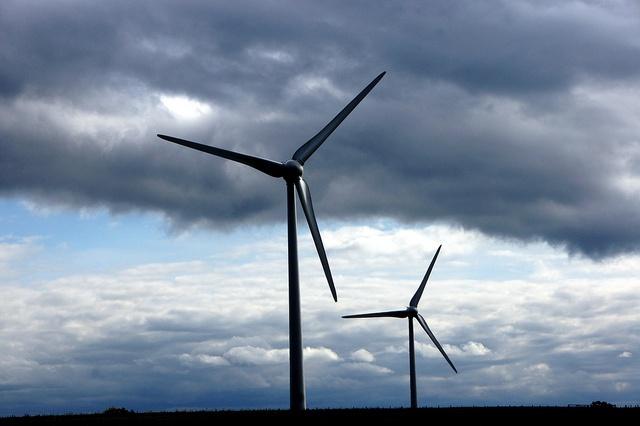
Representatives from the world’s nations will meet in Paris from Nov. 30 to Dec. 12 to craft a successor to the Kyoto Protocol. The world is already almost halfway to the 2 degrees Celsius global temperature rise that experts warn we just can’t go beyond, according to data released earlier this month by the U.K.’s Met Office. Before this year’s end, we could make it halfway to the 2-degrees benchmark.
Fortunately, there are ways that greenhouse gas (GHG) emissions can be reduced. Scaling up renewable energy is one key measure, as a recent report by the International Renewable Energy Agency (IRENA) found. Achieving a 36 percent share of renewable energy by 2030 would provide half of the emissions reductions needed to keep temperature rise to 2 degrees.
The world’s population is expected to continue growing, and that means electricity demand will also continue to rise. Over the last 40 years, the world’s population grew from 4 billion to 7 billion people, and electricity generation grew by over 250 percent. “This growth will continue,” the report declares. In 2030 there is predicted to be over 8 billion people in the world, with 5 billion living in urban areas. World electricity generation is predicted to increase by 70 percent.
Unfortunately, the average emissions intensity of electricity production has “barely changed” during the last 20 years, the report states. The gains from the increasing deployment of renewable energy and less intensive fossil fuels like natural gas have been offset by the increasing use of coal and less efficient power plants. “Without a substantial increase in the share of renewables in the mix, climate change mitigation will remain elusive,” the report warns.
If we continue with business as usual, we will not keep emissions down to the recommended level. Under current policies and national plans, average carbon emissions will only decrease to 498 grams of carbon per kilowatt-hour of energy (g/kWh) by 2030. And that is not enough to keep carbon levels below 450 parts per million (ppm), the level that climate experts warn we don’t want to exceed. However, doubling the share of renewables would reduce emissions to 349 g/kWh, which is equivalent to a 40 percent intensity reduction compared to 1990 levels.
The good news is that solar photovoltaic (PV) prices have decreased by 80 percent since 2008. They are expected to keep on falling. Solar PV can compete without subsidies. Power from a new 70 megawatt (MW) solar plant being built in Chile is expected to sell on the national spot market and compete directly with fossil fuel-based electricity, the report cites as an example.
The price of onshore wind electricity has also decreased. Since 2009, it has fallen by 18 percent and turbine costs fell almost 30 percent since 2008. That makes onshore wind the “cheapest source of new electricity in a wide and growing range of markets,” the report proclaims. And even better news is that renewable power capacity has increased by 85 percent over the last 10 years. Currently, renewable energy accounts for 30 percent of all installed power capacity.
Business is playing an important role in renewable energy deployment. There are several examples cited by the report, including Ikea’s use of wind and solar energy to meet 37 percent of its energy needs. Google’s investment of over $1.4 billion in wind and solar power is another example. However, more investment needs to occur. The total investment in renewable energy increased from $40 billion in 2004 to $214 billion in 2013 (excluding large hydropower), but it fell short of the $550 billion needed annually until 2030 to double the global share of renewable energy and “avert catastrophic climate change,” the report warns.
Renewable energy offers a “route” to reducing GHG emissions. Electricity accounts for over 40 percent of man-made carbon emissions. Solar, wind, hydroelectric, geothermal and bioenergy are 10 to 120 times less carbon intensive than natural gas, considered to be the cleanest fossil fuel, and up to 250 times lower in carbon than coal. The report estimates that doubling the share of renewables, combined with more energy efficiency, can keep atmospheric carbon below 450 ppm.
That is good news indeed and something for the world's representatives to think about as they meet in Paris.
Image credit: Flickr/Martin Abegglen

Gina-Marie is a freelance writer and journalist armed with a degree in journalism, and a passion for social justice, including the environment and sustainability. She writes for various websites, and has made the 75+ Environmentalists to Follow list by Mashable.com.














